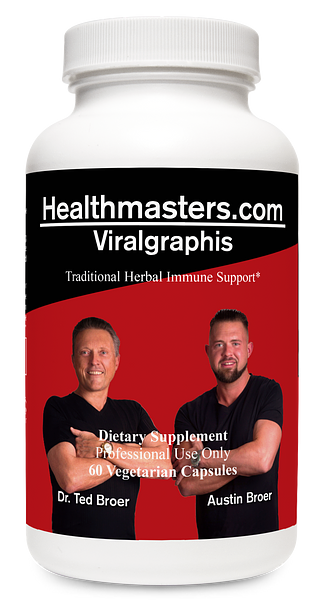🚨 Boost Your Immunity Fast with Viralgraphis! 🚨
🌟 Feel Stronger, Faster – Empower Your Body’s Defenses! 🌟
Are you looking for rapid, powerful immune support to keep you feeling your best? Viralgraphis is the game-changing formula you’ve been waiting for! Specially designed to boost immune function and support respiratory health, this fast-acting, short-term formula is your secret weapon to feel healthier, stronger, and more energized – starting in just 48 hours!
💥 Why Choose Viralgraphis?
- Fast-Acting Immunity: Packed with andrographis, licorice root, and indigowoad extract, this potent blend is clinically proven to support your body’s immune response quickly and effectively. Feel the results within days!
- Respiratory Health Support: This formula specifically targets upper respiratory health, helping to clear congestion and support your lungs, so you can breathe easy and feel energized.
- Cytokine & Eicosanoid Balance: Viralgraphis helps balance your body's natural defenses to promote optimal immune function, ensuring you can fight off threats fast.
- Traditional Herb Power: With roots in Ayurveda and Traditional Chinese Medicine, this herbal formula is backed by centuries of use and cutting-edge science.
🧪 Clinically Proven Ingredients for Maximum Effectiveness
- Andrographis Extract: A powerful herb that works quickly to support your immune response and upper respiratory health. In clinical studies, users reported a significant improvement within just 2 days of use!
- Licorice Root Extract: This ancient herb has been shown to supercharge immune function, especially in the presence of pathogens, helping you stay strong and healthy.
- Indigowoad Extract: Known for stimulating white blood cell production and supporting immune system strength, this ingredient helps keep your defenses strong and balanced.
🌱 Plant-Based, Powerful, and Fast-Acting
Viralgraphis is made with 100% vegetarian capsules and the finest herbs that work together naturally to support your immune system and respiratory function. It’s perfect for those who want fast relief and a strong defense without harsh chemicals.
⚡ Take Charge of Your Health!
Don’t wait for illness to strike! Viralgraphis is the immunity boost you need to stay healthy, active, and feeling amazing. Whether you’re dealing with a seasonal challenge or just want to give your body the support it needs, Viralgraphis has got you covered!
💊 60 Vegetarian Capsules of immune support, just waiting to help you feel incredible.
🌟 Boost your immune system fast with Viralgraphis – order now and experience the difference! 🌟






